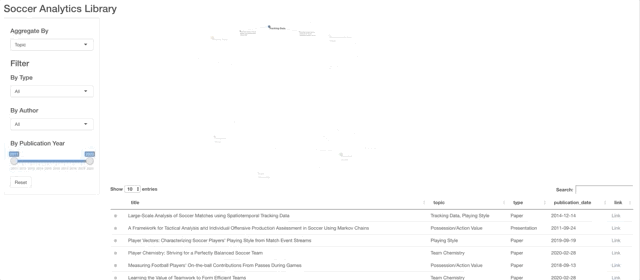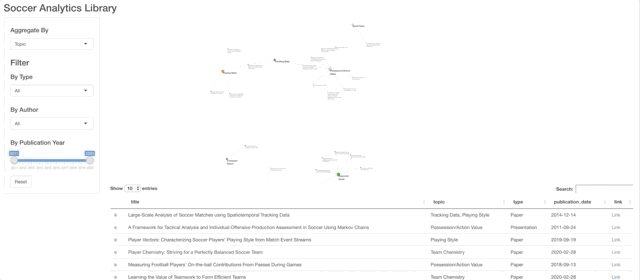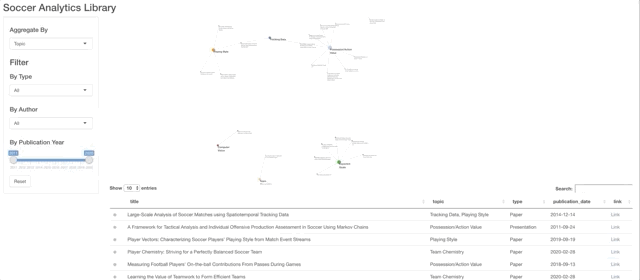Introducing: Soccer Analytics Library
As many year-end Twitter threads have highlighted: 2020 was a great year for soccer analytics. New open-sourced data sets have enabled a new wave of amateur content, while ever more sophisticated research is published by clubs, data providers and universities around the world.
Having followed the space for a few years now it becomes increasingly difficult to follow and digest all relevant research.
James Yorke, who obviously has much more experience and a better overview on research then me, already raised a similar concern more than a year ago.
I feel like we're dangerously close to aspects of historical knowledge of football analytics being forgotten, and that many newly interested people just have no idea about why or what is important or what foundations current knowledge is built on...
— James Yorke (@jair1970) September 8, 2019
In this post I want to open-source a Shiny app I am planning to use to organize relevant research in the soccer analytics space. This tool can hopefully serve as a straight-forward tabular collection of research as well as a way to identify overlap between research topic, author and institution (via an interactive network chart).
Find a few possible use cases below:
Find all research on xG models
Clicking on any node filters the table below.

Find a certain paper by name and read its abstract
The search functionality of the table makes it easy to filter by name.

Filter for research published between 2011 and 2015
By filtering by publication year we can observe changing research focus over time.

Contribute
One person alone cannot possibly know and aggregate all relevant research. If you know a piece that is missing feel free to open an issue on Github and I will add it. Research should be publicly available (not behind a paywall) and introduce a new concept to the community (quality over quantity).
Customize
Another option to interact with this tool is to clone the project on Github to then run a customized version locally. Instead of showing the abstracts in the table you could add your own nodes. The data in the table could be for a different set of papers altogether or the graph nodes may aggregate by another variable.
